#Leiden C
Photo

Aula begraafplaats Groenesteeg. Vakantie Leiden en Kasteel De Haar. Leiden, begraafplaats Groenesteeg. https://flic.kr/p/2nC5PFo April 27, 2022 at 05:57PM
0 notes
Text
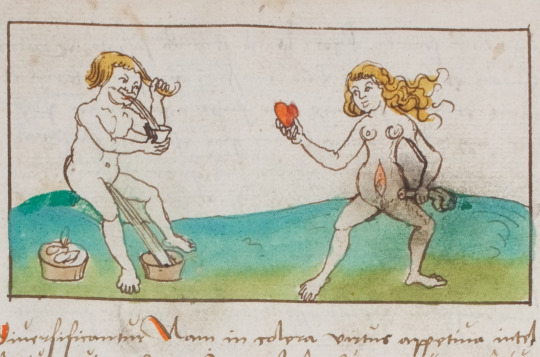


a woman with a wound in her chest holding a heart and a penis, next to her a man exuding fluids
in the alchemical treatise 'aurora consurgens', thuringia, c. 1522
source: Leiden, Universitätsbibliothek, VCF 29, fol. 58v
#the only thing i know is that there's more information on this image and this manuscript in the book#“visiones de fuego. historia ilustrada de la alquimia” by maría pandiello#16th century#alchemy#occultism#alchemical imagery#aurora consurgens#hearts#genitalia
334 notes
·
View notes
Text
Spät ist es schon, die Zeit ist knapp
Die Welt steht vor der großen Klappe
Die Klimakrise, die Pandemie
Die Menschenrechte, die Demokratie
Wie lange noch, wie viel noch leiden
Wie viele noch, wie viel noch meiden
Die Wahrheit, die Verantwortung
Die Lösung, die Veränderung
Spät ist es schon, doch nicht zu spät
Um aufzustehen, um mitzureden
Um zu handeln, um zu wählen
Um zu gestalten, um zu teilen
Spät ist es schon, doch noch ist Zeit
Für Hoffnung, für Solidarität
Für Frieden, für Gerechtigkeit
Für Liebe, für Menschlichkeit
(C) Edition spätzug nein Unmenschlichkeit
184 notes
·
View notes
Note
For a school assignment, I'm assembling an anthology around the theme of queer divinity and desire, but I'm having a hard time finding a fitting essay/article (no access to real academic catalogues :/ ), do you know of any essays around this theme?
below are essays, and then books, on queer theory (in which 'queer' has a different connotation than in regular speech) in the hebrew bible/ancient near east. if there is a particular prophet you want more of, or a particular topic (ištar, or penetration, or appetites), or if you want a pdf of anything, please let me know.
essays: Boer, Roland. “Too Many Dicks at the Writing Desk, or How to Organize a Prophetic Sausage-Fest.” TS 16, no. 1 (2010b): 95–108. Boer, Roland. “Yahweh as Top: A Lost Targum.” In Queer Commentary and the Hebrew Bible, edited by Ken Stone, 75–105. JSOTSup 334. Cleveland, OH: Pilgrim, 2001. Boyarin, Daniel. “Are There Any Jews in ‘The History of Sexuality’?” Journal of the History of Sexuality 5, no. 3 (1995): 333–55. Clines, David J. A. “He-Prophets: Masculinity as a Problem for the Hebrew Prophets and Their Interpreters.” In Sense and Sensitivity: Essays on Reading the Bible in Memory of Robert Carroll, edited by Robert P. Carroll, Alastair G. Hunter, and Philip R. Davies, 311–27. JSOTSup 348. Sheffield: Sheffield Academic Press, 2002. Graybill, Rhiannon. “Yahweh as Maternal Vampire in Second Isaiah: Reading from Violence to Fluid Possibility with Luce Irigaray.” Journal of feminist studies in religion 33, no. 1 (2017): 9–25. Haddox, Susan E. “Engaging Images in the Prophets: Feminist Scholarship on the Book of the Twelve.” In Feminist Interpretation of the Hebrew Bible in Retrospect. 1. Biblical Books, edited by Susanne Scholz, 170–91. RRBS 5. Sheffield: Sheffield Phoenix Press, 2013. Koch, Timothy R. “Cruising as Methodology: Homoeroticism and the Scriptures.” In Queer Commentary and the Hebrew Bible, edited by Ken Stone, 169–80. JSOTSup 334. Cleveland, OH: Pilgrim, 2001. Tigay, Jeffrey. “‘ Heavy of Mouth’ and ‘Heavy of Tongue’: On Moses’ Speech Difficulty.” BASOR, no. 231 (October 1978): 57–67.
books: Ahmed, Sara. Queer Phenomenology: Orientations, Objects, Others. Durham, NC: Duke University Press, 2006. Bauer-Levesque, Angela. Gender in the Book of Jeremiah: A Feminist-Literary Reading. SiBL 5. New York: P. Lang, 1999. Black, Fiona C., and Jennifer L. Koosed, eds. Reading with Feeling : Affect Theory and the Bible. Atlanta, GA: SBL Press, 2019. Brenner, Athalya. The Intercourse of Knowledge: On Gendering Desire and “Sexuality” in the Hebrew Bible. BIS 26. Leiden: Brill, 1997. Camp, Claudia V. Wise, Strange, and Holy: The Strange Woman and the Making of the Bible. JSOTSup 320. Gender, Culture, Theory 9. Sheffield: Sheffield Academic Press, 2000. Chapman, Cynthia R. The Gendered Language of Warfare in the Israelite-Assyrian Encounter. HSM 62. Winona Lake, IN: Eisenbrauns, 2004. Creangă, Ovidiu, ed. Men and Masculinity in the Hebrew Bible and Beyond. BMW 33. Sheffield: Sheffield Phoenix Press, 2010. Eilberg-Schwartz, Howard. God’s Phallus: And Other Problems for Men and Monotheism. Boston: Beacon, 1995. Huber, Lynn R., and Rhiannon Graybill, eds. The Bible, Gender, and Sexuality : Critical Readings. London, UK ; T&T Clark, 2021. Guest, Deryn. When Deborah Met Jael: Lesbian Biblical Hermeneutics. London: SCM, 2005. Graybill, Rhiannon, Meredith Minister, and Beatrice J. W. Lawrence, eds. Rape Culture and Religious Studies : Critical and Pedagogical Engagements. Lanham, Maryland: Lexington Books, 2019. Graybill, Rhiannon. Are We Not Men? : Unstable Masculinity in the Hebrew Prophets. New York, NY: Oxford University Press USA, 2016. Halperin, David J. Seeking Ezekiel: Text and Psychology. University Park: Pennsylvania State University Press, 1993. Jennings, Theodore W. Jacob’s Wound: Homoerotic Narrative in the Literature of Ancient Israel. New York: Continuum, 2005. Macwilliam, Stuart. Queer Theory and the Prophetic Marriage Metaphor in the Hebrew Bible. BibleWorld. Sheffield and Oakville, CT: Equinox, 2011. Maier, Christl. Daughter Zion, Mother Zion: Gender, Space, and the Sacred in Ancient Israel. Minneapolis, MN: Fortress, 2008. Mills, Mary E. Alterity, Pain, and Suffering in Isaiah, Jeremiah, and Ezekiel. LHB/OTS 479. New York: T. & T. Clark, 2007. Stökl, Jonathan, and Corrine L. Carvalho. Prophets Male and Female: Gender and Prophecy in the Hebrew Bible, the Eastern Mediterranean, and the Ancient Near East. AIL 15. Atlanta, GA: SBL, 2013. Stone, Ken. Practicing Safer Texts: Food, Sex and Bible in Queer Perspective. Queering Theology Series. London: T & T Clark International, 2004. Weems, Renita J. Battered Love: Marriage, Sex, and Violence in the Hebrew Prophets. OBT. Minneapolis, MN: Fortress, 1995.
86 notes
·
View notes
Note
One question is if the six-eared macaque is a negative aspect of Sun Wukong's personality, that means that the other two mystical monkeys are also aspects of the personality except that unlike the Macaque, they are both positive aspects or simply part of Sun's personality. and the reason why they do not appear directly or are agonistic in jttw is because they do not go against the path of Buddhist enlightenment
Sorry if you don't understand, I don't speak English and I'm using a translator.
I've also speculated that the other two cestial primates are aspects of Sun Wukong's mind. An update to my Six Ears article reads:

I'm not really sure why the other two don't explicitly appear in the narrative. But I do know that, including Sun Wukong, the four celestial primates mirror the four kinds of monkeys and apes living on Flower-Fruit Mountain. As I write here, chapter one reads:
The Handsome Monkey King thus led a flock of gibbons [yuanhou, 猿猴], macaques [mihou, 獼猴], and horse-monkeys [mahou, 馬猴], some of whom were appointed by him as his officers and ministers (based on Wu & Yu, 2012, vol. 1, p. 106).
美猴王領一群猿猴、獼猴、馬猴等,分派了君臣佐使。
The gibbons are also called "long-armed gibbons" (tongbei yuanhou, 通背猿猴; lit: "(arms)-through-the-back gibbons"). [1] (This refers to the belief that the long, agile arms of the gibbon were somehow connected (i.e. tongbi, 通臂), passing through the back (i.e. tongbei, 通背) (Gulik, 1967, p. 92-93).) The horse-monkeys are also called "red-buttocked horse-monkeys" (chikao mahou, 赤尻馬猴). [2] These terms are important to remember.
Here is the list of the four celestial primates:
Stone-Monkey of Numinous Wisdom (Lingming shihou, 靈明石猴) - i.e. Sun Wukong
Red-Buttocked Horse-Monkey (Chikao mahou, 赤尻馬猴) - The exact same kind as that mentioned above.
Long-Armed Gibbon (Tongbi yuanhou, 通臂猿猴; lit: "Connected Arms Gibbon") - As mentioned above, tongbi (通臂) and tongbei (通背) refer to the ape's long arms.
Six-Eared Macaque (Liu'er mihou, 六耳獼猴)
The apes and monkeys of Flower-Fruit Mountain and the Four Celestial Primates both include Sun Wukong (i.e. the Stone Monkey), Red-Buttocked Horse-Monkeys (Chikao mahou), Long-Armed Gibbons (Tongbei and Tongbi), and Macaques (mihou), one of which has Six Ears (Liu'er). Therefore, the two groups are practically the same.
Based on this, a person might suggest that if one celestial primate (Sun Wukong) is born on Flower-Fruit mountain, then others can be, too. This opens the door to all four of the celestial primates having been born (or at least manifesting) there. And since Six-Ears is an aspect of Monkey's mind, the missing two celestial apes could be as well.
I should note that Wukong's Four Might Commanders are two long-armed (tongbei) gibbons and two red-buttocked horse-monkeys. Someone could suggest that two of them make up the missing celestial primates. But they are never shown to have great powers, just knowledge about the world outside of Flower-Fruit Mountain.
In the end, though, the missing celestial primates may not appear simply because they are not important to the overall narrative.
Notes:
1) Yu (Wu & Yu, 2012) incorrectly translates tongbei yuanhou (通背猿猴) as "bare back monkey" (vol. 1, p. 131).
2) Yu (Wu & Yu, 2012) incorrectly translates this as "baboon" (vol. 1, p. 106). The horse-monkey was a nickname for the macaques placed in horse stables to keep away sickness (refer to here).
Sources:
Gulik, R. H. (1967). The Gibbon in China: An Essay in Chinese Animal Lore. Leiden: E.J. Brill.
Wu, C., & Yu, A. C. (2012). The Journey to the West (Vols. 1-4) (Rev. ed.). Chicago, Illinois: University of Chicago Press.
#Sun Wukong#Monkey King#Four Celestial Primates#Four Monkeys of Chaos#Six-Eared Macaque#Journey to the West#JTTW#Four Mighty Commanders
47 notes
·
View notes
Text
pilgrimage quiz bibliography

I really wasn't joking
Blickle, P. The Revolution of 1525. Thomas A. Brady, Jr. and H.C. Erik Midelfort (trans.). Baltimore. 1985
Connolly, D.K. The maps of Matthew Paris: Medieval journeys through space, time and liturgy. Woodbridge, Suffolk, UK. 2009
Foster-Campbell, M. 'Pilgrimage through the pages: Pilgrim’s Badges in late medieval devotional manuscripts' in Push me, pull you: Imaginative and emotional interaction in late medieval and Renaissance art. S. Blick and L.D. Gelfand (eds.) Leiden. 2011
Geary, P. 'Humiliation of Saints.' In Saints and their cults: studies in religious sociology, folklore, and history. Stephen Wilson (ed.). London. 1985.
de Hamel, C. A History of Illuminated Manuscripts. London. 1986
Hildegard von Bingen. Physica. Reiner Hildebrandt and Thomas Gloning (eds.). Berlin. 2010
Kerr, J. Monastic Hospitality: The Benedictines in England, c.1070-c.1250. Woodbridge. 2007
Salvadore, M. 'The Ethiopian Age of Exploration: Prester John’s Discovery of Europe, 1306-1458.' Journal of World History, 21. 2011. pp. 593 - 627
Shultz, E. Gothic and Renaissance Art in Nuremberg 1300-2550. New York. 1986
Thanks to @viasplat for typing up the pentiment bibliography! you saved me a bunch of work
#i mostly just read some stuff from the pentiment bibliography but yeah#some great stuff here#could not stop reading the monastic hospitality book#so many good pics in the nuremburg art collection#god i cannot tell you how long i spent reading hildegard.#i learned so much. raw onion is evil; butter is a plant etc#mine#kal speaks#for pinned
25 notes
·
View notes
Text
„Sie werden überall, in allen Vorfallenheiten, Verhältnissen, Geschäften, Händeln, Leiden und Freuden Ihres Erdewallens, D i c h t e r seyn; immer denken, fühlen, reden, handeln, wie nur ein D i c h t e r denkt, fühlt, spricht und handelt: und, wenn Sie auch zehn Jahre hinter einander keinen einzigen Vers gemacht hätten, so wird doch alles, was Sie in diesen zehn Jahren gesehen, gehört, versucht, gethan und gelitten haben, entweder
P o e s i e g e w o r d e n seyn; und es werden am Ende dieser (dem Anschein nach) für die Musen verlornen Periode Ihres Lebens mehr
K e i m e und E m b r y o n e n v o n
G e d i c h t e n a l l e r A r t in Ihrer Seele liegen, als Sie, wenn Sie auch B o d m e r s oder
N e s t o r s Jahre erreichten, nicht auszubrüten Zeit haben würden.“
— Christoph Martin Wieland: Sendschreiben an einen jungen Dichter (1782).
#wielandposting#ja keine ahnung freunde ich bin da sehr emotional drüber geworden#das sind keine verlorenen jahre etc etc#(und dann wurde ich rausgerissen weil er bodmer steinalt genannt hat aber keine sorge ich war direkt wieder drin in den gefühlen)
10 notes
·
View notes
Text

i feel like posts like these are based off of a sense of well-meaning anger but miss the point in a particularly radical feminist way and make people up just to be mad at them. Anyone [in a honest discussion setting, a non-tumblr discussion, academic settings primarily!] saying men are lonely is personally diagnosing a problem with patriarchy, not saying women don't experience it too. it's just pointing out the way that patriarchy has inner workings that differentiate, reward and punish even within the privileged class of men. Male privilege is intersectional and thus very circumstancial. I'm not saying OP is wrong, but there's a wayyy more nuanced take to be had if we understand that 1) the fact that we have so much reading on masculinities that Highlights the need for a new approach to masculinity that doesn't both drive men to and excuse men's violence, and 2) male privilege is tied to 'doing' gender correctly as well as the legal, optical, social, medical, etc, status of manhood (thank you Butler) so it's not like being cis magically makes anyone violent, smth smth Bourdieu's habitus theory applied to a masculine habitus that includes violence
some reading that i find interesting bc i've been on a bunch of feminist theory and praxis workshop groups about feminity and masculinity (as a transmasc, non-passing, effeminate non binary). the following are recommended citations!
Nancy E. Dowd, Masculinities and Feminist Legal Theory, 23 Wis. J.L. Gender & Soc'y 201 (2008), available at http://scholarship.law.ufl.edu/facultypub/415
Cramer, K.M., Neyedley, K.A. Sex Differences in Loneliness: The Role of Masculinity and Femininity. Sex Roles 38, 645–653 (1998). https://doi.org/10.1023/A:1018850711372
Pitt, S. L., & Fox, C. A. (2012). "Performative Masculinity: A New Theory on Masculinity". In Masculinity/Femininity: Re-Framing a Fragmented Debate. Leiden, The Netherlands: Brill. https://doi.org/10.1163/9781848880948_006
Nikki Wedgwood (2009)Connell's theory of masculinity – its origins and influences on the study of gender1 ,Journal of Gender Studies,18:4,329-339,DOI: 10.1080/09589230903260001
Will H Courtenay,
Constructions of masculinity and their influence on men's well-being: a theory of gender and health, Social Science & Medicine, Volume 50, Issue 10, 2000, Pages 1385-1401, ISSN 0277-9536,
https://doi.org/10.1016/S0277-9536(99)00390-1. (https://www.sciencedirect.com/science/article/pii/S0277953699003901)
Carrigan, T., Connell, B., & Lee, J. (1985). Toward a New Sociology of Masculinity. Theory and Society, 14(5), 551–604. http://www.jstor.org/stable/657315
and finally!
#sorry as a queer researcher i love to challenge ideas that come from radical feminism#they don't help the feminist cause at all#i know anger is satisfying but this isn't productive in my scholarly opinion#and adding the word cis only shifts the essentialism to the cisgender locus of malehood#its still radical feminism
14 notes
·
View notes
Text

Factor V Leiden is a mutated form of human factor V, a substance crucial for blood clotting. This variant results in hypercoagulability, meaning an increased tendency for abnormal and potentially harmful blood clot formation. Protein C, an anticoagulant protein that normally counteracts factor V's pro-clotting activity, is unable to bind properly to factor V due to this mutation. Factor V Leiden is the most common hereditary hypercoagulability disorder among ethnic Europeans. This is interesting historical fact It was first identified in 1994 by Rogier Maria Bertina and Pieter Hendrick Reitsma's team in Leiden, Netherlands.
By the Way the most following complication of the Jaws has been associated with the osteonecrosis .Dr.Galyna Khrushch
5 notes
·
View notes
Text

Follower of Gerard Dou
(Leiden 1613 - 1675 Leiden)
„The mousetrap“
c. 1680/90
oil on copper
IM Kinsky
18 notes
·
View notes
Photo
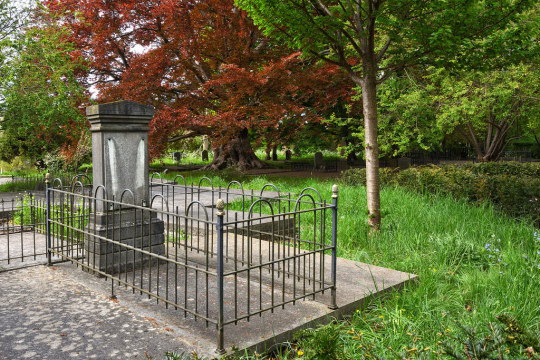
Begraafplaats Groenesteeg. Vakantie Leiden en Kasteel De Haar. Leiden, begraafplaats Groenesteeg. https://flic.kr/p/2nBJ2BB April 27, 2022 at 05:42PM
0 notes
Text
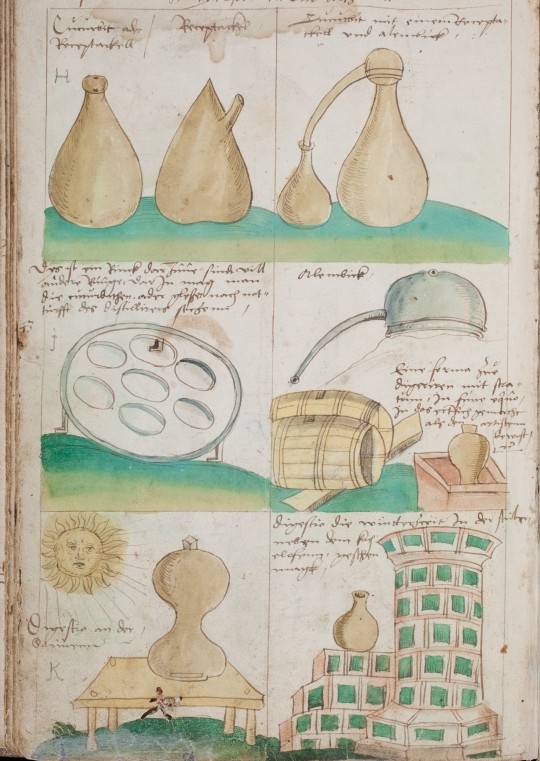
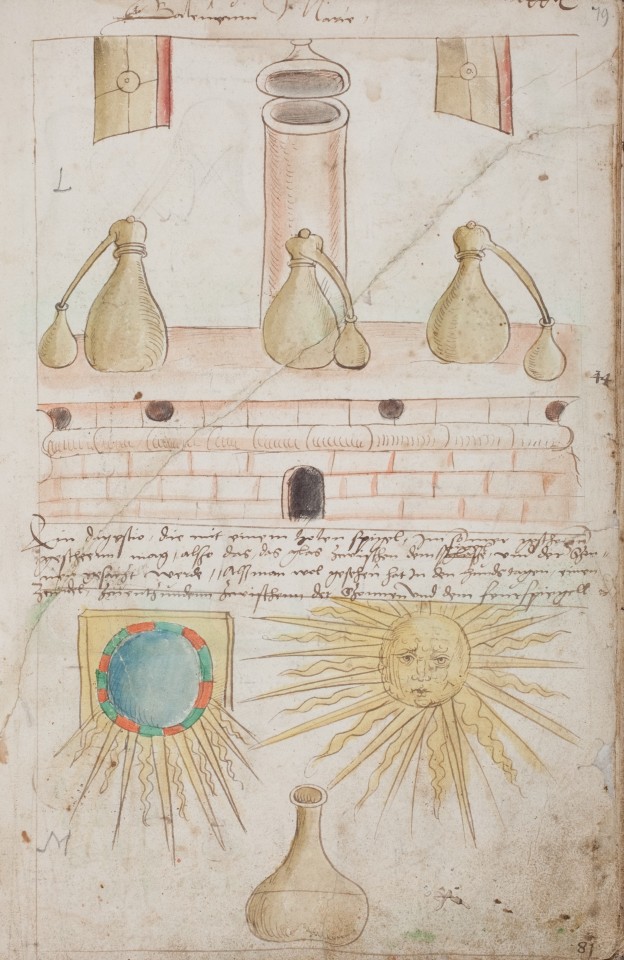
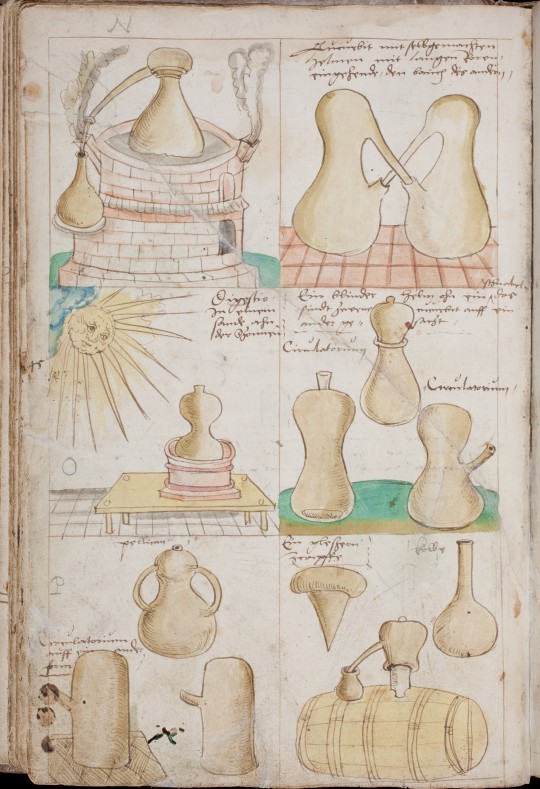
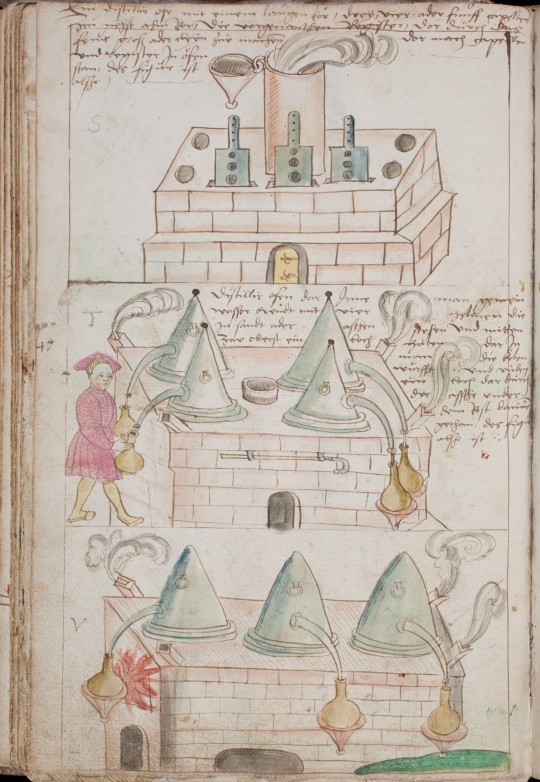
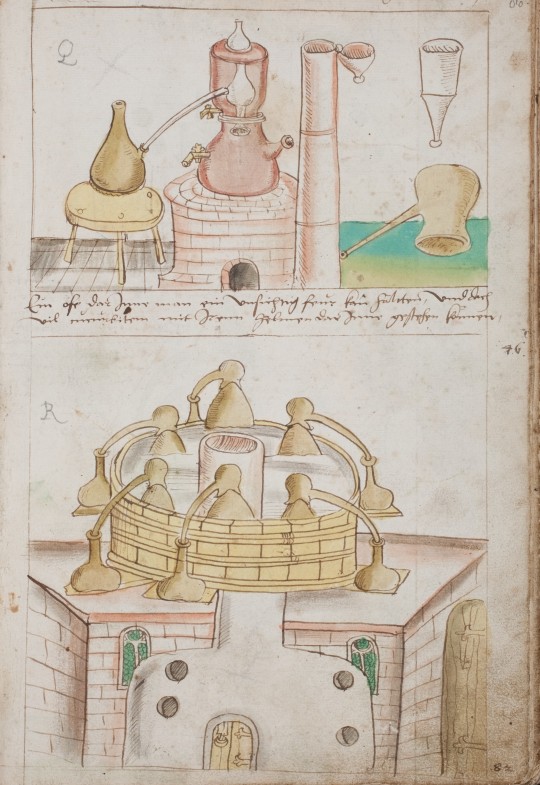
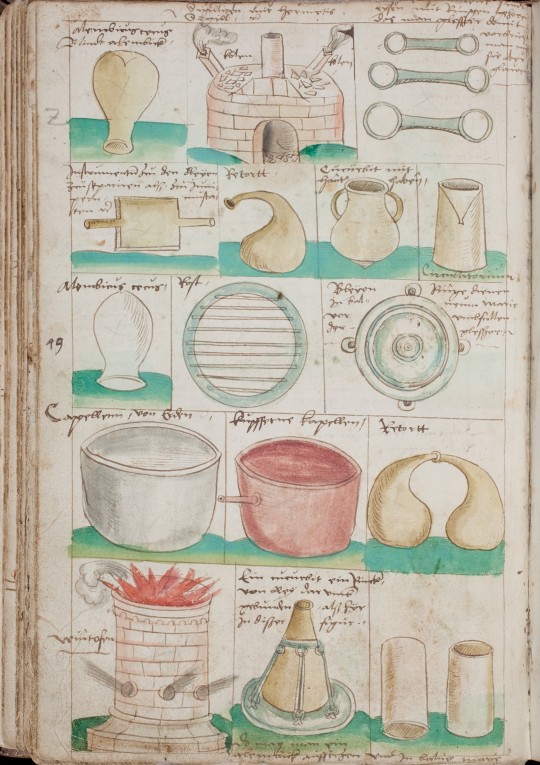
alchemical apparatuses
drawings in an alchemical miscellany, thuringia, c. 1522
source: Leiden, Universitätsbibl., VCF 29, fol. 78v-81r
209 notes
·
View notes
Text
Natural history as the basis for trade and commercial agriculture mediated the link between overseas expansion and the development of European scientific thought. By virtue of its strategic location in the moist tropics, Peninsular Malaysia made a significant contribution to natural history and, thus, to colonial science. [...] Botanical and zoological collections from insular Southeast Asia were of seminal importance, for example, to the pioneer studies of Charles Darwin and Alfred Russel Wallace. [...]
The search for economic produce was actively promoted by both the English and Dutch East India Companies [...]. Modern European plant science had its roots in [...] the creation of physick and, later, botanic gardens, established [...] in Pisa, Padua, Florence, [...] Leiden, Oxford, Cambridge, [...] and Edinburgh. Among other functions, these gardens served, as institutions for training physicians for service in the colonies. The lead role they played in discovering and inventorying plants [...] forged a crucial link between botanic gardens and the quest for products, territory and empire.
Garcia D’Orta (c. 1501/2-68), a Spanish physician who served several viceroys in Goa, established the botanic garden near Bombay [...]. His Aromatum Historia (1563) [...] has been described as ‘a landmark in the history of civilization’. [...]
Hendrik van Rheede’s ground-breaking 12-volume Hortus Malabaricus (1678-1703) [was] based on [...] Ayurvadic knowledge and the services of Ezhava collectors and tree climbers in the Malabar. [...]
---
[T]he connection [Linnaeus] established between natural history and national wealth was widely influential. It struck a cord with Adam Smith (1723-90) and other political economists [...] who placed their faith in agricultural improvement [...]. These developments put a premium on naturalists and [...] Sir Comte de Buffon [...] and Joseph Banks [...] served as agricultural and medical consultants to sovereigns. [...] [T]he concept of environmental determinism informed Adam Smith’s philosophy of the superiority of Western nations, endowed with temperate climes, over the people of the tropics. [...] The person who brokered the link between desire for material wealth and the search for its location and procurement overseas was the indomitable and widely influential [Joseph] Banks, President of the Royal Society (1778-1820) and, from 1773, de facto director of the Royal Botanical Gardens. Also a member of the Privy Council Committee for trade – the organization most directly concerned with augmenting wealth and self-sufficiency -- he used his influence with the Royal Institution and the Board of Agriculture to forge a successful link between science and empire. [...]
Carolus Clusius who held the Chair of Botany in Leiden (1592-9) reputedly obtained ‘Malaysian’ specimens from Sir Francis Drake.
Again, following the death in 1695 of the VOC [Dutch East India Company] botanist, Paulus Hermann, his notes and manuscript [...] were acquired and used by William Sherard (Sherwood), founder of the Chair of Botany in Oxford.
---
In 1778, the English East India Company (EIC) appointed J.G. Koenig, a pupil of Linnaeus, as ‘Professor of Botany and Natural History’ in Madras. [...]
His appointment, believed to have been initiated by Banks, firmly established colonial science within the purview of imperial economic policy. [...]
Koenig worked in the private gardens [...] in Melaka and conducted the earliest and largest botanical survey of the west coast of the Peninsula (1778-9). Bengkulen (Bangkulu), [...] where pepper cultivation was extensively researched, was declared a Presidency [...] with the express aim of developing its full economic potential. To help fulfill this objective, Philip and Charles Miller, sons of the well-respected gardener at the Chelsea Physick Garden, were engaged as botanists [...] Charles Miller was entrusted in ‘the greatest secrecy’ with the experimental planting of nutmeg and cloves, using seedlings that visiting Bugis traders were encouraged to smuggle from Maluku. [...] [T]he EIC envisaged expanding the range of Benkulen’s exports by the introduction of tea, ginger, turmeric and mulberries. [...] These efforts prefigured experiments in spice cultivation at the Calcutta Botanic Gardens [...].
Newbold took his knowledge of the tropical environment in the [Malayan] Straits Settlements to Madras, where he earned a reputation as a naturalist and an Orientalist [...]. His lecture to the Bengal Asiatic Society in 1846 [...] was hugely influential and put the Peninsula at the heart of the emerging discourse on tropical ecology. [...] [T]hose [tropical botanic gardens] established by the EIC in Penang (1794) and Singapore (1822) were integral to its commercial aims for extending the chain of ‘tropical Edens’. As centres for the [...] assemblage of exotic crops [...], botanic gardens were perceived as symbols of scientific progress and imperial might.
---
All text above by: Jeyamalar Kathirithamby-Wells. "Peninsular Malaysia in the context of natural history and colonial science." New Zealand Journal of Asian Studies Volume 11 Number 1. June 2009. [Bold emphasis and some paragraph breaks/contractions added by me.]
13 notes
·
View notes
Text
Maandag | 13-05-2024 | 24°C | Salerno | Dag 1
Vandaag had ik mijn eerste schooldag. Ik moest om 8:30 aanwezig zijn in het gebouw van Accademia Italiana, Via Roma. Vanaf mijn appartement is het zo’n zeventien minuten lopen, een route die bergafwaarts voert. Bij aankomst moest ik een schriftelijke toets maken, een dubbelzijdig A4’tje. De reisorganisatie in Nederland had laten weten dat er ook een mondeling examen zou worden afgenomen, maar dit is uiteindelijk niet gebeurd.
Na het maken van mijn toetsje, wachtte ik in het klaslokaal tot de andere studenten binnendruppelden. Het lokaal was voorzien van een digitaal schoolbord (hypermodern) en een tafel waaraan we met z’n allen moesten zitten, waardoor we weinig werkruimte hadden (enigszins pover, vond ik). De les begon om 9:00 en duurde tot 13:00. Mijn klasgenoten waren – helaas – allemaal niet mijn soort mensen: een handjevol senioren, waarvan een Nederlandse vrouw genaamd José (wat Jose, maar dan op z’n Spaans, werd), een paar Duitsers en een Braziliaanse vrouw; drie Japanners, waarvan een die amper iets begreep van de les en waarvan een ander (die tevens naast me zat) last had (en daardoor ik dus ook) van een zeer slechte adem; en als laatst een oerdegelijke (Germaanse?) meid van rond mijn leeftijd. Al met al zeer teleurstellend.
Nog teleurstellender was het tempo waarop we door de les sukkelden. Ik ben blij dat ik thuis in Den Haag een privécursus Italiaans heb gevolgd, want die basiskennis helpt me toch wel veel op weg. Daardoor lag het tempo vandaag in de klas te laag voor mij. Niet dat ik alles foutloos maakte, maar ik had geen tien minuten nodig voor het bedenken van twee zinnen, in tegenstelling tot mijn klasgenoten. De lerares heeft me echter verteld dat ze tijdens de pauze overleg zou plegen om te bepalen of ik wellicht naar een hogere klas mag.
Tijdens de pauze ben ik het schoolgebouw ontsnapt en heb ik voor €1 een vierkanten focaccia bij een bakkertje gekocht. Het was superzonnig weer vandaag en aangenaam warm. Achter onze school ligt de zee, met aan de rechterzijde bergen op de achtergrond en aan de linkerzijde de haven van Salerno.
Na school heb ik een beetje door de straten geslenterd, niet goed wetende wat te doen. Ik ben daarom maar door het centrum gelopen, wat erg klein bleek te zijn. In gedachten begon ik mijn brief aan Cypress te schrijven, met daarin mijn bevindingen van Salerno. Hieruit is het idee voor een blog ontstaan. Zo ben ik erachter gekomen dat Salerno me erg aan Spanje doet denken, al lopen de mensen hier gelukkig niet zo sloom als de Spanjolen (groot irritatiepuntje van mij); Salerno is helemaal niet zo toeristisch en ik ben pas een winkeltje met ansichtkaarten tegengekomen, en pas een McDonalds en een Burger King. Daarnaast is het verkeer in Salerno chaotisch, maar minder eng dan in Napels; je moet gewoon een gaatje vinden en oversteken, de mensen hier stoppen wel.
Bij een barretje heb ik voor €1,80 een caffè con latte gedronken. Het barretje bevond zich naast een groenteboer bij wie de knoflookbollen aan een sliert naar beneden hingen. Daarna ben ik terug naar huis gelopen.
Mijn weg terug is makkelijk te vinden. Ik hoef alleen maar omhoog te lopen en het grote Stadio Donato Vestuti te vinden en vanaf daar weet ik de weg. Mijn flat ligt in een rustige wijk met veel omringende, armetierige flats. Het is geen bijzonder gezellige wijk, maar het is er wel veilig. Ik heb me tot nu toe nergens onveilig gevoeld op straat, overal is veel straatverlichting.
Mijn kamer is werkelijk luxueuzer dan ik ooit had gedacht, het heeft meer weg van een hotelkamer dan van een studentencomplex. Ik heb een ruime kamer met een tweepersoonsbed, een tv waarop ik al mijn favoriete series in het Italiaans heb kunnen kijken (I Simpson, CSI en Criminal Minds), een bureau en een eigen badkamer met een fijne douche. Ik heb een superruim balkon met twee deuren die naar mijn kamer leiden. De keuken deel ik momenteel met een vrouw uit Tsjechië die amper thuis is en wier naam ik steeds vergeet.
Vanmiddag heb ik huiswerk gemaakt en een beetje gestudeerd. Omdat ik weinig werkwoorden ken, kan ik me nog niet goed uitdrukken in het Italiaans. Daar moet gauw verandering in komen, wil ik meer kunnen oefenen met spreken. Ook heb ik mijn ticket voor de ferry naar Positano gekocht voor aankomende zaterdag. Vorige zomer las ik het boek An Italian Summer gelezen, dat zich afspeelde in Positano en aan de Amalfi kust. Prachtige gekleurde huisjes en mooie stranden. Ik kijk ernaar uit. Mijn bezoek aan Amalfi bewaar ik voor volgend weekend.
De taalschool biedt ook culturele uitstapjes aan. Vandaag ontving ik het programma voor deze maand en zag ik al een aantal activiteiten die me aanspraken, zoals een rondleiding in Vietri sul Mare (steenworp afstand), een rondleiding door Salerno (elke maandag; ik doe volgende week mee), een seminario waarbij we de Italiaanse handgebaren uitgelegd krijgen, een bezoek aan een limoncellobedrijf (inclusief degustazione), en zo is er nog veel meer. Genoeg te doen dus. Als ik sportiever was geweest en de juiste schoenen had gehad, was ik ook nog mee gegaan op trektocht in de natuur.
’s Avonds heb ik pasta pesto gekookt (lees: spaghetti gekookt en een potje pesto gekocht) en ben ik na mijn avondmaal eropuit gegaan. Ik ben naar de lungomare (waterkant) gegaan en heb foto’s genomen van de bergen en de feeërieke lucht. Buiten was het aangenaam lauw, niet te warm, maar ook zeker niet te koud. In de korte tijd dat ik in stilte het uitzicht bewonderde, werd ik zeker driemaal geprikt door een mug. Toen besloot ik dat het wel welletjes was en heb ik een andere route terug naar huis genomen.
●●●●●●●●●●●●●●●●●●●●●●●●●●●●●●●●●●●
En dan nog even over mijn reis gisteren: ik was ruim op tijd op Schiphol aangekomen. Eigenlijk onnodig vroeg, want ik vloog door de check-in en de douane heen. Nog nooit zo snel ben ik door het poortje gelopen, waarna ik erachter kwam dat er geen weg terug was en ik voorbij de Appie To Go was gelopen en nu alleen nog maar keuze had uit zielige dure salades, een bruine boterham met kaas voor maar liefst €6,50 of Italiaans eten (maar ja, dat kon ik beter in Italië eten, of niet soms?). Ik zat vast in de Departures 3 hal/hel en vertikte het om zulk duur eten te moeten kopen. Ik had slechts vier proteïnerepen op zak.
Na lang wachten vertrokken we. Ik kon niet wachten totdat we stabiel waren, zodat ik mijn slaap kon inhalen. Ik was die dag veel te vroeg wakker geworden en had niet meer in slaap kunnen vallen. Gelukkig kon ik slapen tijdens de vlucht, al werd ik zo nu en dan toch wakker (wat me normaal nooit overkomt).
Om 18:00 landden we in Napels. Het voelde alsof ik al een hele week achter de rug had, maar op het vliegveld in Napels verliep alles snel en vertrok ik al gauw. Ik moest de bus vanaf het vliegveld naar het treinstation nemen, waar ik een treinkaartje naar Salerno zou kopen. Het treinstation in Napels was heel druk en chaotisch. Veel automaten deden het niet en overal stonden rijen. Net zoals in Spanje koop je hier een kaartje met een aangewezen zitplaats. De trein was best luxe. Ik kon even op adem komen.
Het treinstation in Salerno was net zo zielig als het station in Alcala de Henares in Spanje. Vanaf het station moest ik nog twintig minuten naar het appartement lopen. Mijn rugzak was zwaar (zeventien kilo) en mijn tote bag met daarin mijn laptop en zware analoge camera was superonhandig om te tillen. Ik heb gelijk gedoucht toen ik aankwam en daarna boodschappen gedaan (dan merk je pas hoe zuinig je bent). ’s Avonds at ik, met nog steeds niet veel meer in mijn maag dan mijn ontbijt en twee mueslirepen, uit pure trek – en bij gebrek aan vegetarische gerechten – een teleurstellend stukje zalm in een bijzonder typisch restaurantje waar er om 22:00 nog een familie met twee jongen kinderen doodleuk ging eten.
Ik heb zeer goed geslapen die nacht.
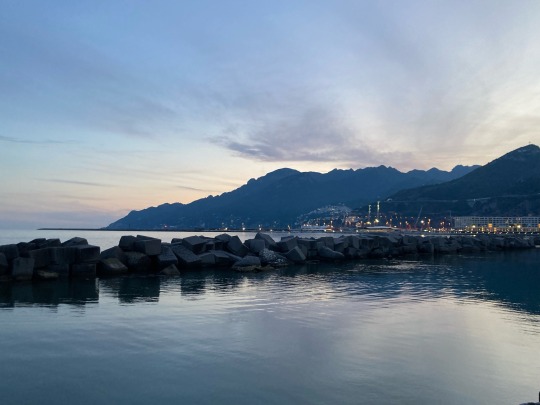

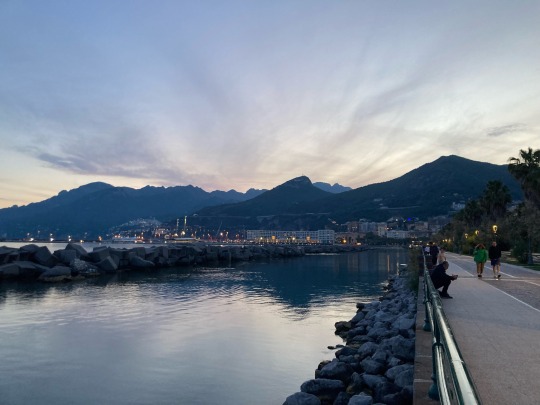

2 notes
·
View notes
Photo
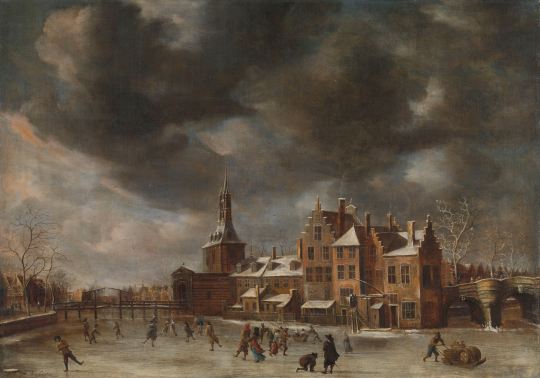
The Blauwpoort in Leiden in the Winter by Abraham Beerstraten
Dutch, c. 1635-1665
oil on canvas
Rijksmuseum
#cityscape#Leiden#genre painting#genre scene#Abraham Beerstraten#Dutch#art#painting#Dutch Golden Age#baroque#winter#ice skating#canal#Netherlands#Blauwpoort#Rijksmuseum#I love the clouds in this painting
41 notes
·
View notes
Text
Sun Wukong's 500 Years in Hell
Chapter seven of Journey to the West (Xiyouji, 西遊記, 1592) ends with the Monkey King being imprisoned under Five Elements Mountain (Wuxing shan, 五行山). Many people forget that this was only half of his punishment:
[The Buddha told the guards that they were] to feed the prisoner with [hot] iron pellets when he was hungry and to give him melted copper to drink when he was thirsty (Wu & Yu, 2012, vol. 1, p. 199).
但他饑時,與他鐵丸子吃;渴時,與他溶化的銅汁飲。
This hellish diet comes directly from Buddhist canon. For example, the Dīrghāgama (Sk: दीर्घागम; Ch: Chang Ahun Jing, 長阿含經; “The Collection of Long Scriptures”) states that these are respective punishments from the Hells of Hunger [Ji, 飢] and Thirst [Ke, 渴] (Howard, 1986, p. 131). For more info, see my previous article.
Shao (1997) explains that the term "Five Elements/Phases" (Wuxing, 五行) is used in JTTW and Buddho-Daoist doctrine to represent mortality. For example, Monkey complains to the judges of hell in chapter three that he is no longer subject to death since he has achieved the Daoist elixir, thereby breaking free of the five elements. His imprisonment beneath Five Elements Mountain and hellish diet are therefore clues that the Buddha is punishing Sun to a symbolic death and afterlife. [1] His subsequent release in chapter 14 can then be viewed as a symbolic reincarnation, which completes the cycle of:
death -> karmic punishment -> rebirth
Remember that the novel states time and time again Monkey was under the mountain for 500 years. Although internal story details suggest it was actually over 600 years, it's important to remember that 500 is used in Buddhist doctrine to denote a large number (Zhao, 2021, p. 126). So, maybe the novel was just implying that Monkey was punished for a really long time.
Note:
1) See chapter four.
Sources:
Howard, A. F. (1986). The Imagery of the Cosmological Buddha. Leiden: E.J. Brill.
Shao, P. (1997). Monkey and Chinese Scriptural Tradition: A Rereading of the Novel Xiyouji (UMI No. 9818173) [Doctoral dissertation, Washington University]. Available from ProQuest Dissertations and Theses database.
Wu, C., & Yu, A. C. (2012). The Journey to the West (Vols. 1-4). Chicago, Illinois: University of Chicago Press.
Zhao, P. (2021). The Essentials of Buddhism: Questions and Answers (H. Fang, trans.). Beijing: American Academic Press.
#Sun Wukong#Monkey King#Journey to the West#JTTW#hell#underworld#punishment#Lego Monkie Kid#LMK#Buddhism#Taoism#immortality#mortality#Five Elements#Five Elements Mountain
68 notes
·
View notes